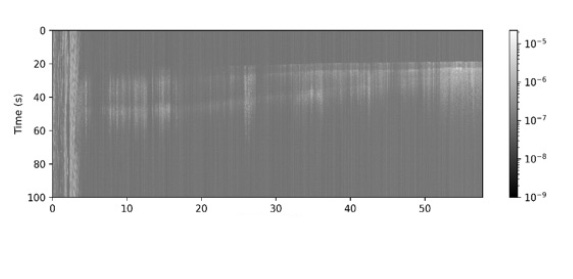At the end of October, a Distributed Acoustic Detection (DAS) interrogator was installed at the EMACOM Cable Landing Station in Praia Formosa, in Madeira Island, Portugal.
This marks a significant advance in the seismic monitoring capacity of the Region of Madeira and adds to the importance of foundation goals that led to the SUBMERSE project – an innovative EU-funded project which aims to utilise existing submarine cables, already used by the research and education networking community, to monitor the Earth and its systems.
The OptoDAS equipment, acquired by the Government of Madeira from Alcatel Submarine Networks, uses a fibre from the EllaLink cable to measure and record the smallest deformations along the first 50 km of optical fibre.
The DAS technology makes it possible to transform communication cables into a chain of hundreds of seismic sensors spaced a few metres apart.

Due to its sensitivity, this technique can detect not only earthquakes but also the vocalisations of marine mammal, sea swells and human activities. Most importantly, with the correct monitoring systems, this information can be used for tsunami early warning or to get a quick understanding of affected areas. Certainly, it is possible to detect offshore earthquakes up to a few tenths of a second, warning before strong shaking begins.
The position of the cable along the seabed also made it possible to very clearly record acoustic signals that propagated through the water, the T waves. This type of signal allows us to calculate a better localisation of earthquakes which, in turn, helps us understand which tectonic structures are active.
An important aspect of this cable is related to the monitoring and characterisation of seismic activity and the potential to detect movements which may provide early warnings of under-sea earthquakes and landslips that generate tsunami risks.
Unlike traditional seismic stations, which provide measurements, the equipment currently installed allows the measuring of seismic energy at intervals of one metre over more than 50 kilometres. For now, the main challenges are related to the enormous volume of data generated and the need to develop algorithms that allow the detection and characterisation of earthquakes in real time.
The instrumentation of this cable is part of a project managed by ARDITI (the Regional Agency for the Development of Investigation, Technology and Innovation in Madeira) and the Madeira Ocean Observatory (OOM) where oceanographic data recorded by buoys and autonomous vessels are combined with DAS data to obtain a global vision of the underwater environment of Madeira Island in all its physical, chemical and biological aspects.
The synergy between advanced technology and traditional methods contributes to a more in-depth knowledge of processes and opens doors to conservation and sustainable management of marine resources in the region.
This result highlights the importance and the potential of the SUBMERSE project, which has DAS equipment installed not just in Madeira in Portugal but in Svalbard in Norway and Rhodes in Greece. The project anticipates many more exciting developments in the future – not just for the Earth observation community but for geoscience and oceanographic communities too.
Image captions
Main image: The red line represents the EllaLink cable, managed by EMACOM. The image indicates the point on the Desertas Islands where the earthquake occurred.
Figure 2: The image represents the record of the earthquake registered on the 27th October 2023 by the OptoDAS technology installed.


